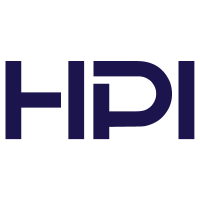April 7, 2025
HPI 2024 Impact Report
The Impact Report is a snapshot of what the Institute has accomplishing for ACR members and the patients they serve — advancing the specialty by meeting our members’ needs.

Launched Interactive U.S. Cancer Disparities Maps
An interactive tool that identifies county-level disparities in cancer screening, prevalence and mortality rates, with an overlay of actionable community factors. Available for free on neimanhpi.org, the maps allow any stakeholder to pinpoint areas with significant disparities, and the most pressing community determinants. The maps fuel advocacy and inform solutions to improve patient outcomes and enhance diversity in clinical research.
The Neiman Cancer Disparity Maps have been shared at major meetings in late 2024 and early 2025, including RSNA, the National Medical Association, ASCO Quality Care Symposium, the National Lung Cancer Round Table, the AWS “She Builds” podcast, and a RHEC webinar.
Addressing Top Issues for ACR Members
Reimbursement Declines – HPI study found that to make up for inflation and conversion factor cuts, physicians would have to deliver over 50% more services per Medicare patient in 2021 to maintain the same per beneficiary reimbursement as in 2005.
Workforce Shortage – HPI studies projected the ongoing radiologist shortage in the US and the impact of various levers to reduce imaging demand or grow the radiologist workforce. Modest estimates indicated the gap in supply and demand is not likely to get better, or worse. Both the number of radiologists and imaging utilization are projected to grow by around 25% by 2055.
Practice Consolidation – HPI study found that the number of practices with a radiologist decreased by 13% over the past 10 years, while the number of radiologists increased 17%.
Non-physician Providers/Scope of Practice – HPI study found non-physician practitioners’ share of imaging interpretation in office-based practices increased 117%, from almost 3% of Medicare imaging studies in 2013 to almost 6% in 2022.
MIPS Performance Determinants – HPI study found that radiologists reporting individually in MIPS underperformed, as did those in small practices. Individual radiologists were 7.4 times more likely to fail to achieve “exceptional” status than group-reporting radiologists, indicating potential disadvantage in the MIPS program.
Radiation Oncology Bundled Payments – HPI study, published in the International Journal of Radiation Oncology, Biology, Physics, demonstrates the impact on reimbursement of a value-based payment model, the Radiation Oncology Case Rate (ROCR). A bipartisan bill introduced to Congress this May includes ROCR to protect access, reduce disparities and improve outcomes in cancer treatment. The results of the study estimated that the patient-centered ROCR program will produce Medicare savings of up to 3 percent across 15 types of cancer compared to historical Medicare Fee-For-Service payments.
Interventional Radiologist Workforce – The HPI and SIR joined forces for this research because of the need for methods that improve the generalizability and comparability across claims-based IR studies, and it is our hope that this work leads to growth in research investigating the value of this field of medicine to patients and populations.
Policy Impact of HPI Research: Key HPI-published findings tied to health policy change.
| Advocacy Win for ACR Members | HPI Research – Key Takeaway |
| Medicare coverage for CT colonography screening – CMS CY2025 final rule |
Medicare patients in high-income areas receive CTC at 5.7 times the rate of those in low-income areas. |
| No Surprises Act: Court Wins TMA I-IV & 2024 Appeals Court |
• Physicians lose money when challenging insurer payments via IDR. • Only 1% of radiology claims are out-of-network • The No Surprises Act may threaten in-network payments |
| CMS MIPS scoring of topped-out measures: flat rate benchmark replaces 7-point scoring cap for 4 radiology measures – CMS CY2025 final rule |
Radiologists in radiology-only practices score lower in MIPS; those in multispecialty practices score higher by reporting other-specialty measures. |
| Rad Oncology Case Rate (ROCR) Value-Based Program Act of 2024 |
Proposed radiation oncology bundled payments produce Medicare savings with goal of stabilizing reimbursement. Bush, et al. 2024, International Journal of Radiation Oncology, Biology, Physics |
| The Medicare Patient Access and Practice Stabilization Act of 2025 (HR 879): Bipartisan legislation reintroduced to Congress to support physicians and protect access to care for Medicare beneficiaries by reversing payment cuts and incorporating inflationary adjustment. |
The study found that physician reimbursement per Medicare patient decreased 2.3% between 2005 & 2021 when accounting for inflation, despite a concurrent increase of almost 46% in physician services to each patient. Christensen, et al. 2024, INQUIRY: The Journal of Health Care Organization, Provision, and Financing |
Visibility and Impact of HPI Research
2024 was the strongest earned media period ever for the HPI!
 |
|
|
|
News reports quoted or cited HPI |
Total audience reach | Advertising cost of earned media coverage |
|
|
||
 |
||
|
New studies published in peer-reviewed journals |


